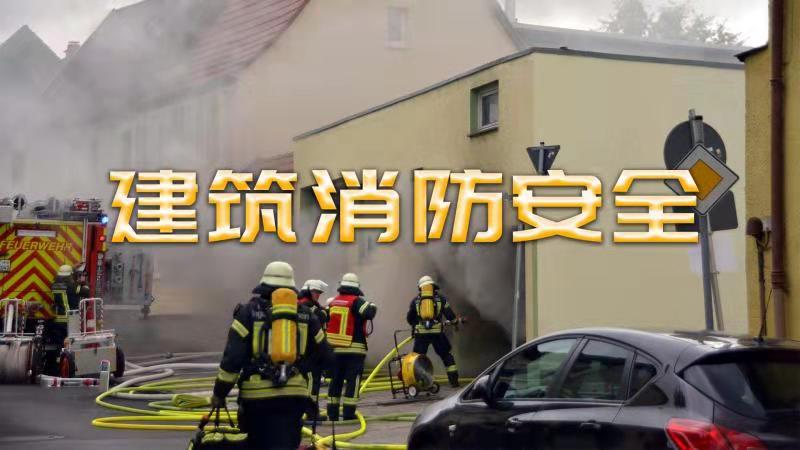
当前课程知识点:Finite Element Method (FEM) Analysis and Applications > 13、Introduction to the application field of finite element analysis (2) > 13.4 Finite element analysis for thermal stress problems: solving non-linear equation > Video 13.4
返回《Finite Element Method (FEM) Analysis and Applications》慕课在线视频课程列表
返回《Finite Element Method (FEM) Analysis and Applications》慕课在线视频列表
我们给出一个热应力问题的有限元分析实例
考虑一个加持杆结构的温度应力分析
我们看看,1、3号节点固定,两端被加持住
2号节点有一个集中力F
假定在20摄氏度的时候,F作用在2号节点上
随后温度上升到60度
在这种情况下,我们进行该结构的有限元分析
首先对该结构进行离散化和编号
把这个结构分成两个单元,1号单元、2号单元
它都是杆单元
每个单元我们进行描述
1号单元的单元刚度矩阵,我们得到的是一个2X2的
同样,2号单元的刚度矩阵也是一个2X2的
由于该问题的温度变化ΔT为40度
所以它引起的单元的温度载荷写成两个
一个是1号单元的温度载荷
按照前面的计算公式我们就可以得到
它是一个2X1的
2号单元一样,我们可以计算得到它的等效温度载荷
它也是一个2X1的
基于单元的描述
我们建立整体的刚度方程
这个K矩阵是整体刚度矩阵
那么进行组装,它是一个3X3的
对于集中力,同样我们也进行组装
它包含两个部分
一个部分是原来所施加的集中力F
F是施加在2号节点上
所以这里有一个300e3N
另外,我们前面已经得到
由于温差是40度,引起的等效温度载荷
我们把这两部分组装起来
就得到了这么一个组装以后的载荷矩阵
那么这个整体刚度方程里面的位移是组装以后的节点位移
我们知道1、3号节点是固定的
所以我们处理边界条件
把这两个节点的节点位移分别令为0
就是让它固定
这样我们就得到关于u2的这么一个方程
这个方程我们求解出来,u2就等于0.22mm
最后我们得到的整体节点位移
也就是把1、3号节点的位移加上
它是一个3X1的
有了整个节点的位移
我们分别来计算各个单元的应力
当然这个地方单元的应力要考虑正常的应力计算
还有一个由于温度引起的这么一个应力
它具体的计算公式就是
这个ε0就是温度应变
这样我们就得到1号单元的应力,就是12.6MPa
2号单元的应力就是-240.27MPa
同学们,这一讲的内容就是这些
我们下一讲再见
-Finite element, infinite capabilities
--Video
-1.1 Classification of mechanics:particle、rigid body、deformed body mechanics
--1.1 Test
-1.2 Main points for deformed body mechanics
--1.2 Test
-1.3 Methods to solve differential equation solving method
--1.3 Test
-1.4 Function approximation
--1.4 Test
-1.5 Function approximation defined on complex domains
--1.5 Test
-1.6 The core of finite element: subdomain function approximation for complex domains
--1.6 Test
-1.7 History and software of FEM development
--1.7 Test
-Discussion
-Homework
-2.1 Principles of mechanic analysis of springs
--2.1 Test
-2.2 Comparison between spring element and bar element
--2.2 Test
-2.3 Coordinate transformation of bar element
--2.3 Test
-2.4 An example of a four-bar structure
--2.4 Test
-2.5 ANSYS case analysis of four-bar structure
--ANSYS
-Discussion
-3.1 Mechanical description and basic assumptions for deformed body
--3.1 Test
-3.2 Index notation
--3.2 Test
-3.3 Thoughts on three major variables and three major equations
--3.3 Test
-3.4 Test
-3.4 Construction of equilibrium Equation of Plane Problem
-3.5 Test
-3.5 Construction of strain-displacement relations for plane problems
-3.6 Test
-3.6 Construction of constitutive relations for plane problems
-3.7 Test
-3.7 Two kinds of boundary conditions
- Discussion
-- Discussion
-4.1 Test
-4.1 Discussion of several special cases
-4.2 Test
-4.2 A complete solution of a simple bar under uniaxial tension based on elastic mechanics
-4.3 Test
-4.3 The description and solution of plane beam under pure bending
-4.4 Test
-4.4 Complete description of 3D elastic problem
-4.5 Test
-4.5 Description and understanding of tensor
-Discussion
-5.1 Test
-5.1Main method classification and trial function method for solving deformed body mechanics equation
-5.2 Test
-5.2 Trial function method for solving pure bending beam: residual value method
-5.3 Test
-5.3How to reduce the order of the derivative of trial function
-5.4 Test
-5.4 The principle of virtual work for solving plane bending beam
-5.5 Test
-5.5 The variational basis of the principle of minimum potential energy for solving the plane bending
-5.6 Test
-5.6 The general energy principle of elastic problem
-Discussion
-6.1Test
-6.1 Classic method and finite element method based on trial function
-6.2 Test
-6.2 Natural discretization and approximated discretization in finite element method
-6.3 Test
-6.3 Basic steps in the finite element method
-6.4 Test
-6.4 Comparison of classic method and finite element method
-Discussion
-7.1 Test
-7.1 Construction and MATLAB programming of bar element in local coordinate system
-7.2 Test
-7.2 Construction and MATLAB programming of plane pure bending beam element in local coordinate syste
-7.3 Construction of three-dimensional beam element in local coordinate system
-7.4 Test
-7.4 Beam element coordinate transformation
-7.5 Test
-7.5 Treatment of distributed force
-7.6 Case Analysis and MATLAB programming of portal frame structure
-7.7 ANSYS case analysis of portal frame structure
-8.1 Test
-8.1 Two-dimensional 3-node triangular element and MATLAB programming
-8.2 Test
-8.2 Two-dimensional 4-node rectangular element and MATLAB programming
-8.3 Test
-8.3 Axisymmetric element
-8.4 Test
-8.4 Treatment of distributed force
-8.5 MATLAB programming of 2D plane rectangular thin plate
-8.6 Finite element GUI operation and command flow of a plane rectangular thin plate on ANSYS softwar
-Discussion
-9.1 Three-dimensional 4-node tetrahedral element and MATLAB programming
-9.2 Three-dimensional 8-node hexahedral element and MATLAB programming
-9.3 Principle of the isoparametric element
-9.4Test
-9.4Numerical integration
-9.5 MATLAB programming for typical 2D problems
-9.6 ANSYS analysis case of typical 3Dl problem
-Discussion
-10.1Test
-10.1Node number and storage bandwidth
-10.2Test
-10.2 Properties of shape function matrix and stiffness matrix
-10.3Test
-10.3 Treatment of boundary conditions and calculation of reaction forces
-10.4Test
-10.4 Requirements for construction and convergence of displacement function
-10.5Test
-10.5C0 element and C1 element
-10.6 Test
-10.6 Patch test of element
-10.7 Test
-10.7 Accuracy and property of numerical solutions of finite element analysis
-10.8Test
-10.8 Error and average processing of element stress calculation result
-10.9 Test
-10.9 Error control and the accuracy improving method of h method and p method
-Discussion
-11.1 Test
-11.1 1D high-order element
-11.2 Test
-11.2 2D high-order element
-11.3 Test
-11.3 3D high-order element
-11.4 Test
-11.4 Bending plate element based on thin plate theory
-11.5 Test
-11.5 Sub-structure and super-element
-12.1Test
-12.1 Finite element analysis for structural vibration: basic principle
-12.2 Test
-12.2 Case of finite element analysis for structural vibration
-12.3 Test
-12.3 Finite element analysis for elastic-plastic problems: basic principle
-12.4 Test
-12.4 Finite element analysis for elastic-plastic problems: solving non-linear equations
-Discussion
-13.1 Test
-13.1 Finite element analysis for heat transfer: basic principle
-13.2 Test
-13.2 Case of finite element analysis for heat transfer
-13.3 Test
-13.3 Finite element analysis for thermal stress problems: basic principle
-13.4 Test
-13.4 Finite element analysis for thermal stress problems: solving non-linear equation
-Discussion
-2D problem: finite element analysis of a 2D perforated plate
-3D problem: meshing control of a flower-shaped chuck
-Modal analysis of vibration: Modal analysis of a cable-stayed bridge
-Elastic-plastic analysis: elastic-plastic analysis of a thick-walled cylinder under internal pressur
-Heat transfer analysis: transient problem of temperature field during steel cylinder cooling process
-Thermal stress analysis: temperature and assembly stress analysis of truss structure
-Probability of structure: Probabilistic design analysis of large hydraulic press frame
-Modeling and application of methods: Modeling and analysis of p-type elements for plane problem




